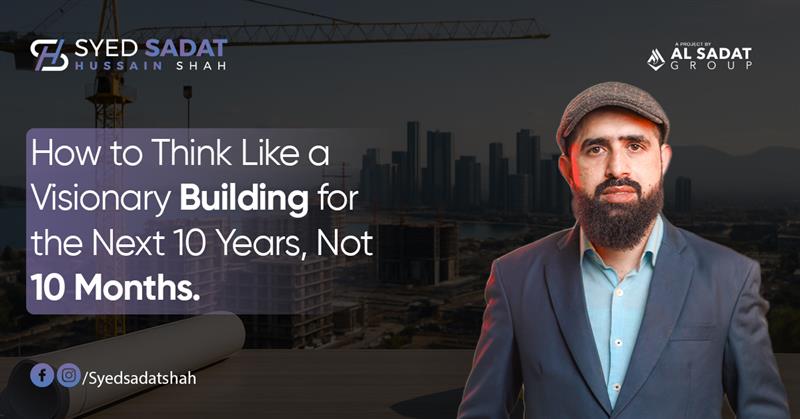In the world of business, too many people are obsessed with the next 10 weeks, while the real game-changers are quietly planning for the next 10 years. I’ve learned that the most successful and resilient leaders are those who think long-term, take bold risks, and never lose sight of the bigger picture.
This mindset is the foundation of visionary leadership in Pakistan. It’s not just about solving today’s problems, it’s about anticipating tomorrow’s needs and positioning your business ahead of the curve. And that’s exactly the kind of thinking Pakistan needs to thrive in a rapidly changing global landscape.
The Value of Long-Term Thinking
When I started my entrepreneurial journey, I didn’t focus on quick wins. I focused on long-term business planning. The truth is, short-term thinking may get you headlines, but only strategic, future-oriented leadership builds legacies.
Strategic thinking for entrepreneurs involves more than just planning a year ahead. It requires understanding trends, societal shifts, and economic cycles. You must learn to align your mission with sustainable growth rather than seasonal hype.
In Pakistan, we need more leaders who build for the next generation, not just the next fiscal quarter. That’s how we’ll unlock innovative business models that can compete globally.
Business Foresight Strategies That Work
To adopt a visionary mindset, I use what I call business foresight strategies. These are methods I personally rely on:
- Study global patterns: Don’t limit yourself to local examples. Learn from international models and adapt them to the Pakistani context.
- Anticipate change: Whether it’s technology, policy, or social behavior, be ahead of the wave.
- Invest in people: Your team is your future. Long-term success is built on strong internal leadership.
- Avoid shortcuts: Building something meaningful takes time. Stick with it.
This mindset has helped me avoid distractions and stay focused on what really matters: creating impact over income.
Lakeshore City: A Product of Vision, Not Haste
Lakeshore City is a manifestation of everything I’ve written above. It wasn’t born out of a trend or a temporary market opportunity, it was built with future-oriented leadership.
- We asked difficult questions at the start:
- What will urban living in Pakistan look like in 2035?
- How can we introduce global standards of sustainability, infrastructure, and luxury while staying rooted in our cultural values?
Our answers helped us create a project that’s not just for today—it’s for the future. Lakeshore City includes smart amenities, sustainable design, inclusive planning, and lifestyle-enhancing features that will remain relevant for decades to come.
We’re not just building homes; we’re building a vision for Pakistan’s future.
Why Pakistan Needs More Visionary Leaders
Visionary leadership in Pakistan isn’t just a fancy phrase. It’s a necessity. The world is moving fast, technologies are evolving, economies are shifting, and mindsets are changing.
If we want to build a Pakistan that thrives in the future, we need leaders who can think in decades, not days. Entrepreneurs who don’t chase trends, but create new ones. Developers who don’t just build structures, but shape societies.
This is how real change happens.
FAQs
Q1: Why is visionary leadership important for Pakistan?
Because short-term fixes won’t solve long-term problems. Visionary leadership in Pakistan ensures we build systems, businesses, and cities that are resilient, sustainable, and competitive globally.
Q2: How can entrepreneurs develop strategic thinking?
By focusing on long-term business planning, studying future trends, and continuously learning from both local and global case studies. Thinking beyond today is a skill that can be developed.
Q3: What are some effective business foresight strategies?
Anticipate market shifts, plan with technology in mind, invest in strong teams, and always be prepared to pivot. These are key elements of strategic thinking for entrepreneurs.
Q4: How did Lakeshore City apply these principles?
Lakeshore City was designed with business foresight strategies and innovative business models, addressing the future needs of urban living rather than today’s market trends.Q5: What’s the biggest obstacle to future-oriented leadership in Pakistan?
The obsession with short-term gains and immediate results. True future-oriented leadership requires patience, resilience, and the courage to go against the grain.

